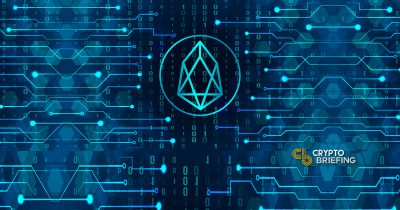EOS Pursuing Compatibility With Ethereum Smart Contracts
Block.one's $200,000 coding challenge to implement the capability is underway

Share this article
Block.one has announced a contest that aims to integrate Ethereum smart contract code with its own EOS blockchain, according to a Devpost page published on Feb. 3.
The challenge requires contestants to “create an EOSIO smart contract that stores and invokes EVM (Solidity) Smart Contracts in a virtual Ethereum-like environment.” Presumably, this would allow developers to port existing Ethereum DApps to EOS more easily.
The contest ends in one year, giving contestants plenty of time to work on the project. Judging and testing will continue for several months after that. Block.one seems to be looking for a demonstration of compatibility, not a full-fledged, working solution.
This means that it may be some time before Ethereum compatibility becomes a reality. Nevertheless, this is a long-awaited feature that has been under discussion since EOS went live in 2018.
Performance Is Key
As Block.one has noted, compatibility with Ethereum would allow developers from other blockchain projects to take advantage of EOS’s speed. “EOS can process smart contracts faster, reducing the impact of a significant roadblock for developers,” the company explains.
Right now, EOS primarily uses C++ and Web Assembly as the basis of its smart contract code, a choice that arguably offers better performance than Ethereum’s Solidity language.
However, the speed at which code can be executed is just one part of its performance. EOS has experienced ongoing transaction capacity issues in recent months. That congestion has caused RAM and CPU prices to surge, which has in turn put high costs on DApp developers.
Attracting Developers to EOS
If EOS manages to attract DApp developers away from other blockchains, the accomplishment would help it close in on Ethereum’s app count. According to live data from DAppReview, EOS currently has just 675 DApps, while Ethereum has 2,190 DApps.
Cross-platform compatibility seems to have benefited TRON, which narrowly overtook EOS’s DApp count this January. Though that growth may be due to other factors, TRON has offered compatibility with Ethereum’s Solidity code since it launched TRON VM (TVM) in 2018, which is likely part of its success.
Several other projects are also working to bridge as many platforms as possible. Loom Network, LiquidApps, and MyWish allow developers to build DApps on multiple blockchains at once.
As such, third-party efforts may bring about code interoperability on EOS before EOS itself does.
